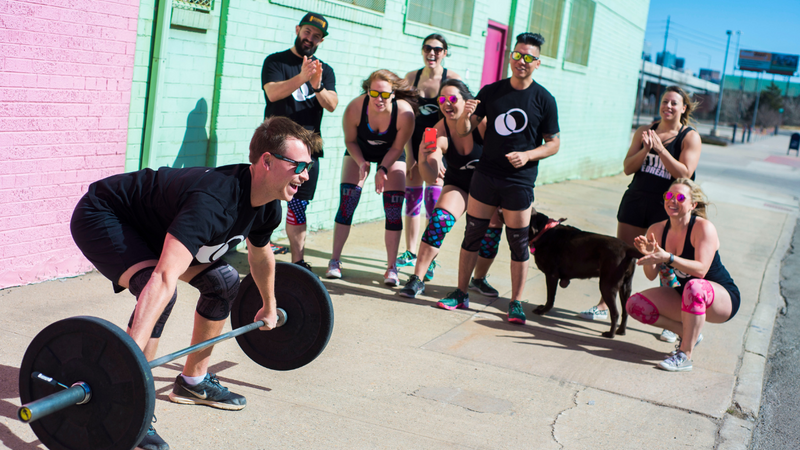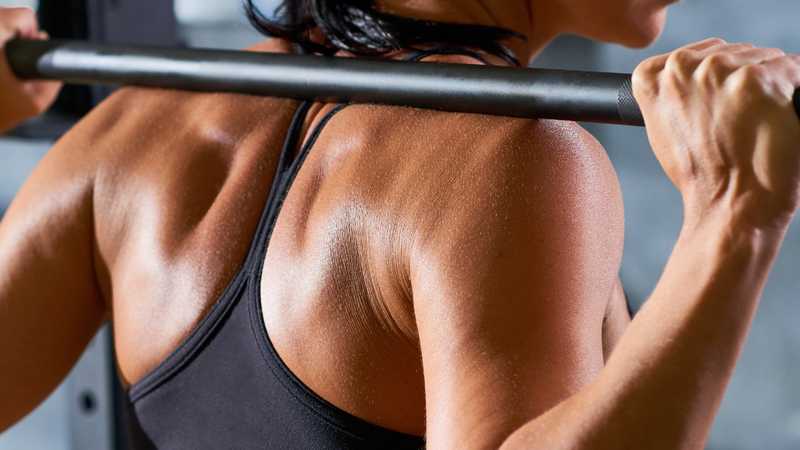By Malia Warren
If you've ever found your grip giving out before your muscles, or if you've dreamed of lifting heavier and pushing harder, lifting straps might just become your new best friend in the gym. In this exploration, we'll unravel the mystery behind these unassuming yet potent tools, uncovering how they can elevate your lifting game and redefine your limits.

My weightlifting coach introduced me to them when he programmed Snatch Grip Deadlifts and Snatch Pulls - movements that can really tax your grip.
So, what is a lifting strap?
It's a piece of fabric, usually tightly woven cotton, polyester or nylon, or sometimes leather, that is placed between your hand and the bar to protect your grip during high-volume or heavy barbell movements. Ideally, the strap's thickness isn't too wide so that you can still feel a bit of your natural grip.
The ideal width for the material is anywhere from 1-2 inches, but the sweet spot is 1.5" for most athletes.
In fact, some people use gymnastics grips for high-volume bar movements, which is absolutely not a bad thing. But if you require a little bit less adjustment - and a lot less chalk - then lifting straps are your new best friend.
Different Types of Straps
Lasso Loop
This style is pretty versatile and easy to strap in, if you will. While one part fits on you like a bracelet, the length of the material wraps around the bar and you're in. These are primarily used in the Powerlifting community due to the volume of deadlifts done in training. One potential downside to this style, however, is in whether or not that has built-in padding. Without padding, the strap might dig into your wrist under the tension of the bar.

Figure 8
We like to call these Ocho Straps, for the obvious figure 8 shape of the strap, but also because we like to change names of things every now and then.
Anyway, these are probably the easiest straps you can use. It's as simple as putting it around your wrist, looping under the bar, and putting your hand through the second hole. Repeat for the other hand. These are great for deadlifts of all kinds to save your precious grip. They're perfect for lifters who want to use their grip on the bar still but want to lessen the load by reducing stress on their hands.
A huge downside to this style is the absence of a quick-release option. Because of the double loop, you're essentially "locked" in with the barbell. For this reason, we recommend these only when you are doing deadlifts.
Oly (Olympic Style)
Ok, I might be a little biased being more of an Olympic lifter myself, but these are my favorite. Not only do you get all benefits above, but they are less bulky and, if placed properly before the lift, stick to the bar like honey on toast.

For real.
The best part is that the release on these is just as quick as your natural grip. Ditch the lift as you normally would by releasing your grip. The only thing that is different is that your grip has been saved a little. You can use Oly style lift straps for so many movements, including the full-on Olympic lifts, the Snatch, and Clean and Jerk. According to the official weightlifting competition rules, you can lift in a sanctioned meet while wearing straps - although, it isn't prohibited, it's definitely not recommended.
Heavy dependence on lifting straps can actually be a hindrance to your training, so be sure to test your grip strap-less every now and then to build up strength.
So which ones should you get? My suggestion, just as a random person with experience in weightlifting and powerlifting, would be the Olympic Straps. They are the most versatile for all styles of lifting and light enough to use for all kinds of lifts and training styles.

Why Use Lifting Straps?
Using lifting straps for certain movements can actually improve your load capabilities. Try adding in straps for your Snatch Pulls, Snatch Grip Deadlifts, and Clean Pulls at 101-105% of your max rep. For example, if your max Snatch is 57 kgs (125 lbs), you should be doing Snatch Pulls at 101% or more, with the assistance of straps if you'd like, and your muscles will get used to pulling the heavier weight.
Over time, your muscles will strengthen and your lifts will benefit - all while saving your grip.
Why save your grip? Well, because, tears and calluses. Be sure to check out our blog post entirely dedicated to hand care here for tips and tricks on how to prevent rips.
It does offer a little bit of a "crutch" in volume snatch Wods, such as "Randy", so be sure to check with your coach if they're ok with it. Mine said no :( Randy is 75 snatches for time with a 55# Barbell for Women and 75# for Men.
But definitely bust them out for Deadlifts, Cleans, and other technique work when needed to save your grip!
Or use them when you're in a bind and need to pull a Jeep.
Ok maybe don't actually buy them specifically to pull a Jeep, because that's not their intention, but definitely get them to move heavy weights!
Super quick tutorial on how to use them:
If you have any questions or you would like to be a guest blogger, please email us at blog@liftingthedream.com
Do you use Lifting Straps in Your Workouts?
 |
Malia is the force behind Lifting the Dream and a proud mompreneur. When she's not lifting heavy weights, she's probably at the beach or Disney with her family. She is a Cali girl born and raised, with salt water in her veins and sunshine in her heart. She and her family now reside in Florida soaking up the sun, heat, and all the amazing outdoor activities this state has to offer. |





0 comments